
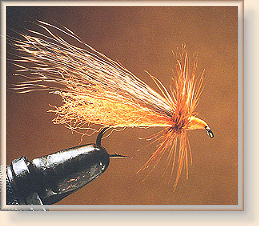 Clark's Stonefly By Lee Clark and Joe Warren
|
|
|
|
|
Tying Steps: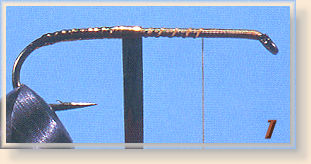 1. Secure the thread behind the hook's eye and wrap the shank to the bend of the hook. Tie in a length of tinsel and bring the thread forward covering 2/3 of the hook. Wrap the tinsel over the thread until you reach the free end of the thread. Each wrap of tinsel should slightly overlap itself. Secure the tinsel should tightly with the thread and trim tag end of tinsel.
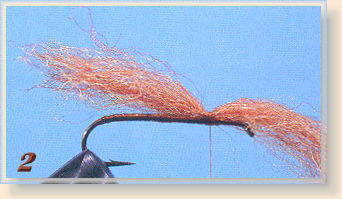 2. Tie in the combed poly yarn fibers atop the hook. The end of the yarn fibers should not exceed more than 1/4 inch past the bend of the hook. Trim the tag end at the front.
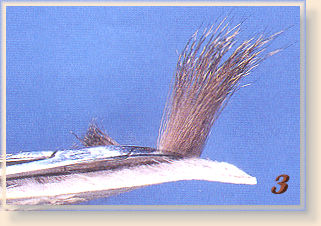 3. Firmly secure a bundle of deer hair from the hide at the base of the fibers. Note the natural curve of the deer hair when you cut off the fibers. Do not stack the deer hair.
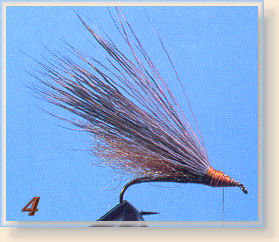 4. Place the deer hair wing over the poly yarn with the curve of the tips sloping over and beyond the poly yarn about a 1/4 inch. To prevent flaring of the wing, use a light tension on the thread for the first few turns. Trim the butts of the hair down to a taper and continue wrapping with the tying thread to form a good base for the hackle.
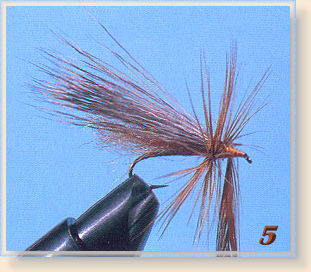 5. Tie in a saddle hackle and wrap three or four times at the front of the wing. Secure the hackle with the thread and whip-finish. Cut a V-notch at the bottom of the hackle to give the fly a lower profile as it sits on the water. Cement the head.
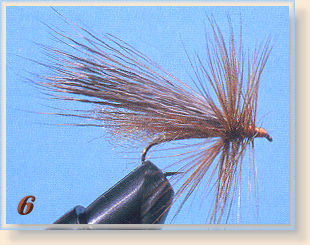 Note: The standard dry fly hackle is tied in with the dull side facing the tyer. I tie my hackle with the shiny side facing the tyer, to present a more life-like silhoutte and motion. ~Lee Clark and Joe Warren
Fishing Suggestions:Credits: Excerpt from Fly Tying with Poly Yarn published by Frank Amato Publications. We greatly appreciate use permission.
|